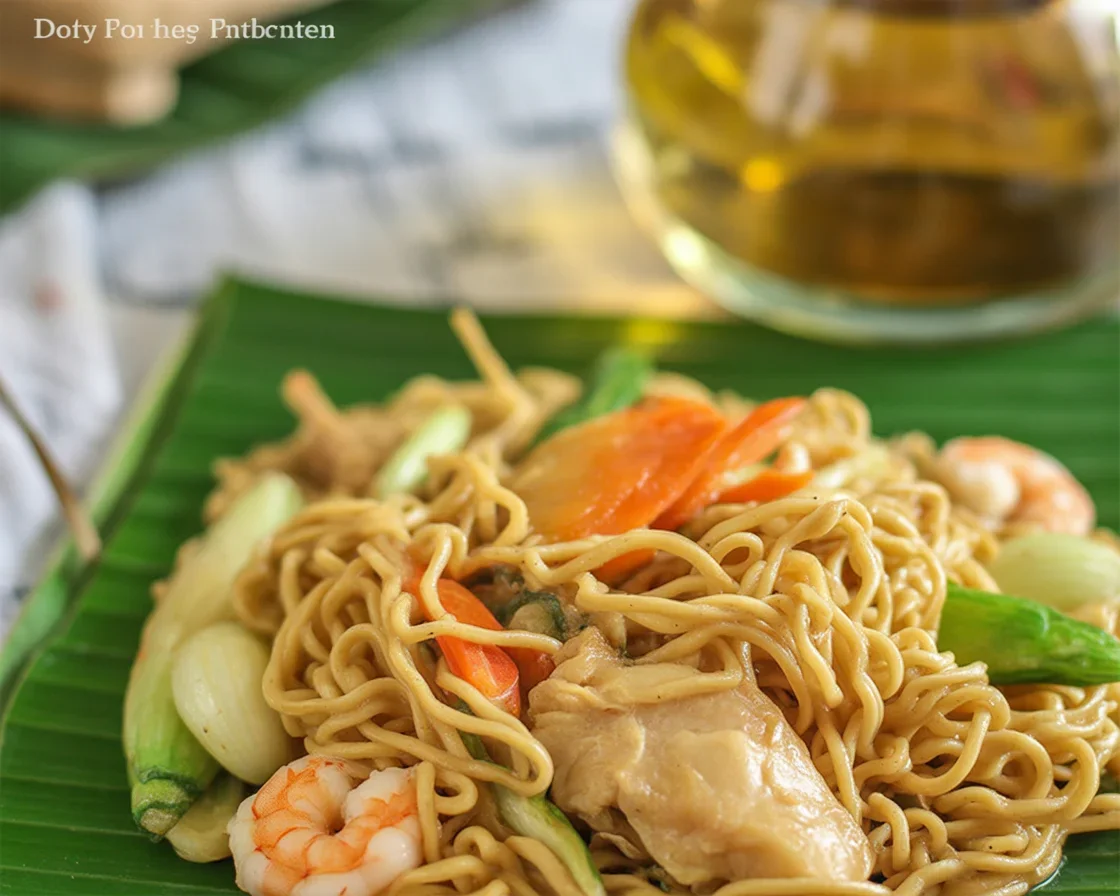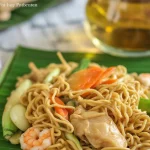- Introduction to pancit habhab
- Ingredients list
- Preparing noodles
- Stir-frying vegetables and meat alternatives
- Seasoning
- Serving on banana leaf
- Street food tips
- Common Questions
- Give Pancit Habhab a Spin!
Filipino pancit habhab is that one dish I always crave but somehow never find unless I’m back in Lucban. Ever get stuck wanting something super local, but all the takeout around is either too oily or missing that special umami punch? That’s me every single time I remember the taste of pancit habhab—ridiculous how some food memories just stick. Not sure what I’m talking about yet? Pancit habhab is a wild little noodle stir-fry from Lucban, Quezon, usually eaten straight off a banana leaf. It’s like a tasty Filipino gut-buster, and honestly, way less complicated to make than you’d think. If you’re also dying for something different from the usual authentic bistek tagalog or healthy Filipino recipes, keep reading because you’re about to level up your noodle game in a big way.
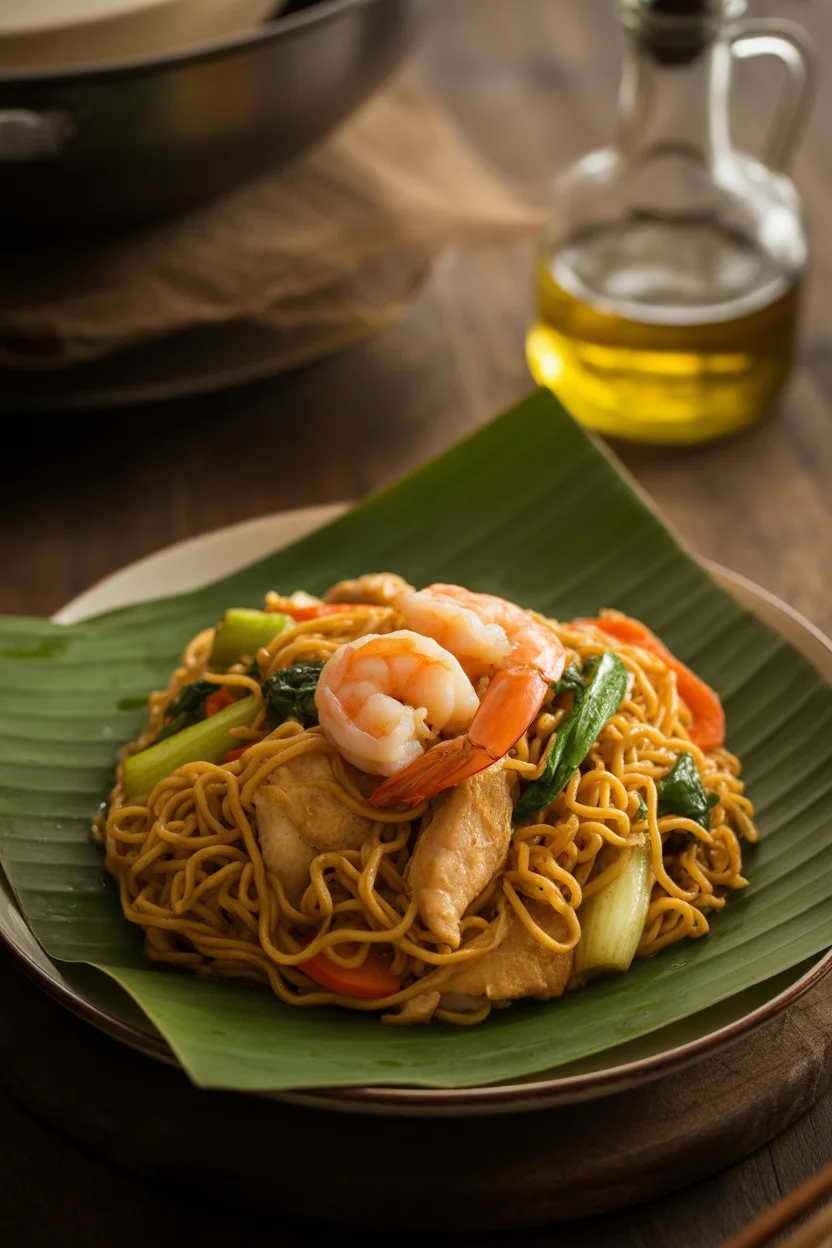
Introduction to pancit habhab
First off, nothing says “Lucban fiesta” quite like a crowd eating pancit habhab, slurping noodles right off banana leaves while standing in the street. Not even exaggerating, it’s a whole vibe. You’ll see it every Pahiyas Festival—loud, messy, happy. This isn’t your regular party noodles, though. Pancit habhab’s main appeal? It’s not shy with its flavors; the noodles, called miki lucban, soak up everything! The garlic, the vegetables, the savory stuff—yeah, totally addictive.
When I first tried to make it at home, I worried it would be one of those recipes that just falls flat away from its hometown street stand. Guess what? Still drool-worthy. Cooking pancit habhab can make your house smell like family gatherings and sunshine—especially if you’ve got a banana leaf. Sure, it’s not the same as rushing to a Lucban carinderia, but you’ll get darn close. All this to say: it’s a noodle dish with personality, and trust me, you want to try it at least once.
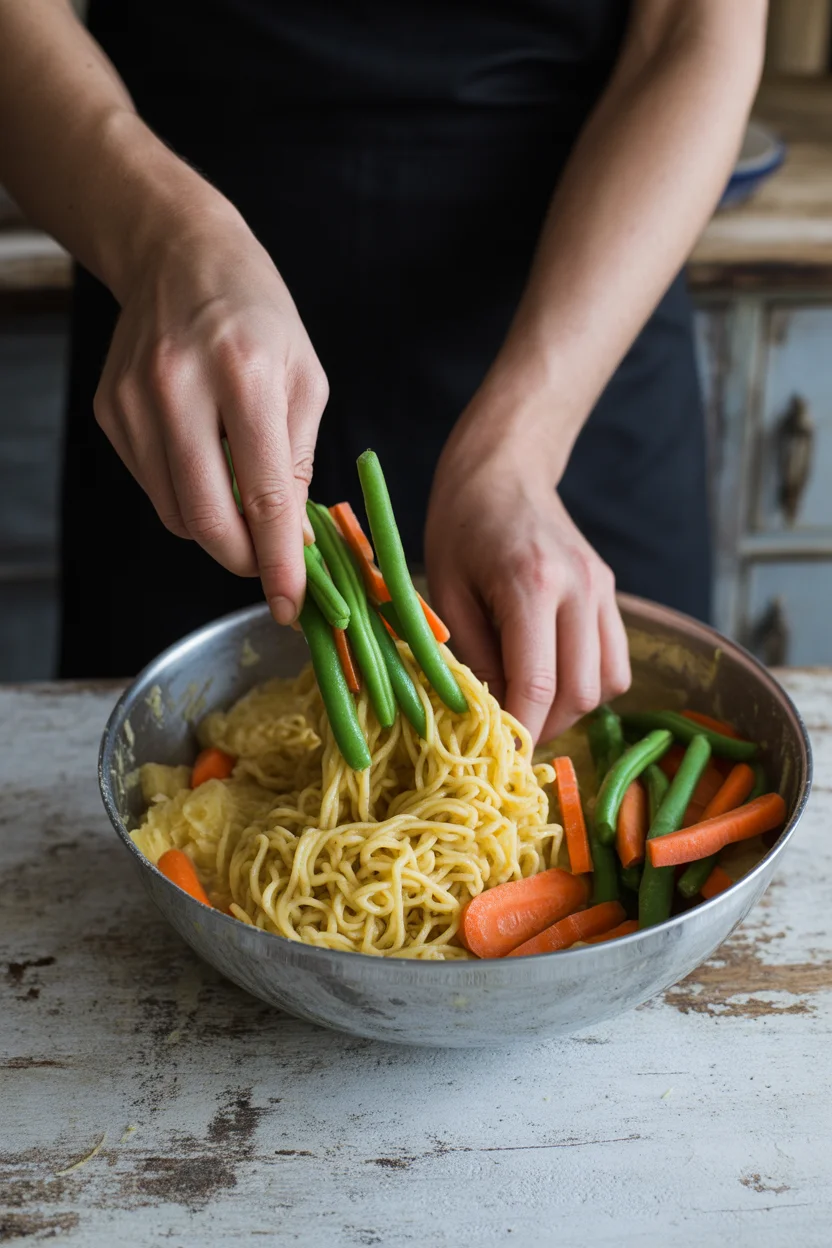
Ingredients list
Here’s where it gets straightforward. You don’t need fancy stuff, and honestly, some substitutions work fine if you can’t get Lucban noodles. Just don’t skip the vinegar when serving—that little splash at the end is magic.
- 500g miki lucban (or thick egg noodles if you can’t find the original)
- 2 tablespoons oil (regular, canola, whatever’s handy)
- 5 cloves fresh garlic, minced
- 1 large onion, sliced thin
- 200 grams pork belly, sliced thin (optional—skip or swap for tofu or mushrooms)
- 1 cup chicharro (snow peas) or green beans, sliced at an angle
- 1 cup carrots, julienned
- 2 tablespoons soy sauce
- 1 tablespoon oyster sauce (optional, but tasty)
- 2 cups broth (chicken or vegetable both work)
- Pinch of salt and ground pepper
- About 2 tablespoons banana vinegar (for serving, don’t cook this in)
- Chopped green onions for garnish
- Banana leaves (cleaned, for serving; if unavailable, use a big plate—it’s alright)
Not gonna lie, sometimes I toss in whatever’s in my fridge. Pancit habhab is pretty forgiving!

Preparing noodles
The trick to good pancit habhab? You want your noodles just right—not soggy, not stiff. The miki lucban comes fresh or dried, so check your packaging. Usually, a quick rinse in hot (not boiling!) water does the job for fresh ones. If you’re going the dried route, boil for 3-4 minutes, then rinse with cold water. Twist them gently with your hands. They shouldn’t stick together in weird clumps.
My first time, I overcooked the noodles and made pancit mush-hab. Big regret. Don’t be like me. Keep the noodles a tiny bit firm because they’ll sit in the pan with sauce later. After that, drain them well, set aside, and do a little pre-victory dance!
But—if you can snag real miki lucban, wow, the texture is something else. Chewy yet slurpable. Regular thick noodles do fine, but the Lucban ones? Let’s just say you’ll want to eat off a banana leaf, too.
Stir-frying vegetables and meat alternatives
Okay, now we get to the noisy, hot part. Heat up your oil in a big pan or wok. Toss in the garlic first—make it sizzle (but don’t burn it, please, burnt garlic is sadness). Add onions and mix until they’re all shiny and a little soft. Here’s where you add your pork or tofu. Give it a little color. When it’s starting to brown, add your beans and carrots.
The deal is, keep things moving—it’s not a stew. Quick, hot, and the veggies should stay a bit crisp. Mushrooms or even firm tofu soak up good flavor here for a vegetarian version. Don’t crowd the pan or you’ll end up with steamed veggies. After a few minutes, everybody in the pan should smell good, look glossy, and make your stomach grumble. At this point, you’ll be tempted to grab a bite. Hold on—the noodles still need to join the fun.
“Tried this at home and even my picky teenager wouldn’t stop eating—totally tastes like home, just less crowded!” —Lani S.
Seasoning
Got your noodles ready and veggies cooked? Let’s flavor-bomb this. Pour in your soy sauce and (if you’re feeling fancy) that oyster sauce. Add salt and pepper, but go slow—taste as you go. Pour in the broth and let it get bubbly before adding your noodles.
Mix gently, like you’re turning a sleepy baby. Let the noodles soak up all that saucy goodness—give it 2-3 minutes, no more, you want everything heated through but not mushy. This is where the whole house will suddenly decide to hang around the kitchen. Trust me.
Some folks add a touch of sugar, but I keep mine savory. Anyway, nobody remembers a bland pancit habhab, right? Amp up the flavor if you dare. By now, things should look like a proper feast.
Serving on banana leaf
Here’s the part that makes pancit habhab a five-star street food experience—plopping the noodles onto a big, cleaned banana leaf. No banana leaf? A pizza box lid works, or even just a big tray. Lazier options exist, but they’re not nearly as fun. In Lucban, you eat with your mouth (no fork!), stooping over so the noodles slide right in. It’s a bit of a performance.
Sprinkle with green onions and, the most important—dab of vinegar on the side. I love seeing people’s faces the first time they eat this: at first skeptical, then suddenly bright-eyed after realizing how all those flavors just click together. Eating this off a banana leaf is half the fun—don’t skip if you can help it!
Serving Suggestions:
- Always serve with banana vinegar (don’t worry, regular cane vinegar is fine in a pinch).
- Eat straight off the leaf, slurping is not just allowed, it’s expected.
- Pair with cold calamansi juice. Or even beer if it’s that kind of day.
The whole thing is pretty casual—wet wipes and zero etiquette required.
Street food tips
Want to channel real Lucban street energy? Okay, a couple of things. First, keep the portions generous but practical. You want people coming back for seconds, not clutching their guts after huge bowls. Second—get loud. Seriously. Pancit habhab is about eating together, joking, being messy, and just hanging out. Play some OPM hits, open your windows, whatever.
Don’t worry if you don’t have the exact local vinegars or banana leaves. Improvise! Pancit habhab is the definition of Filipino hospitality—a dish that feels especially right when you share it, even if your table is just a messy kitchen counter and your plates are, well, recyclable.
Biggest tip? Don’t sweat perfection. If your noodles are a little overcooked or you swap snow peas for green beans, you’re still winning at life. Get everyone to dig in at the same time for ultimate effect.
Common Questions
What do I use if I can’t get miki lucban?
No stress! Thick egg noodles or even regular fresh egg noodles work well enough.
Can I make pancit habhab vegetarian?
Absolutely. Swap out pork belly for mushrooms or firm tofu—still super tasty.
Is banana leaf really necessary?
It’s the tradition, but a big regular plate or tray will do fine if you can’t get one.
Why do people eat it without utensils?
It’s street style! Plus, slurping off the banana leaf is honestly half the experience—less about rules, more about fun.
Can I prepare it ahead of time?
Sure, but it tastes absolute best hot and fresh. Reheat only if you must, but expect noodles to soften more.
Give Pancit Habhab a Spin!
If you’re bored of the same old noodle dishes, pancit habhab is about to become your new go-to. The balance of savory noodles, crisp veggies, and tangy vinegar? Nothing else compares. It’s proof that classic Filipino comfort food doesn’t have to be fussy to be five-star.
Ready for more tasty adventures? Check out this Pancit Habhab Recipe for another take. And if you want to see street-style in action, you’ll love No Forks, Please…Eating PANCIT HABHAB Street-Style – The … or even scroll through this awesome i ate Pancit HabHab for real people’s reactions. Don’t forget to swing by for more Filipino kitchen inspiration every week—you might find your next favorite, like easy pancit palabok or even a creamy maja blanca for dessert. Go on—give it a shot, and let me know if your kitchen also starts smelling like Lucban by the end!
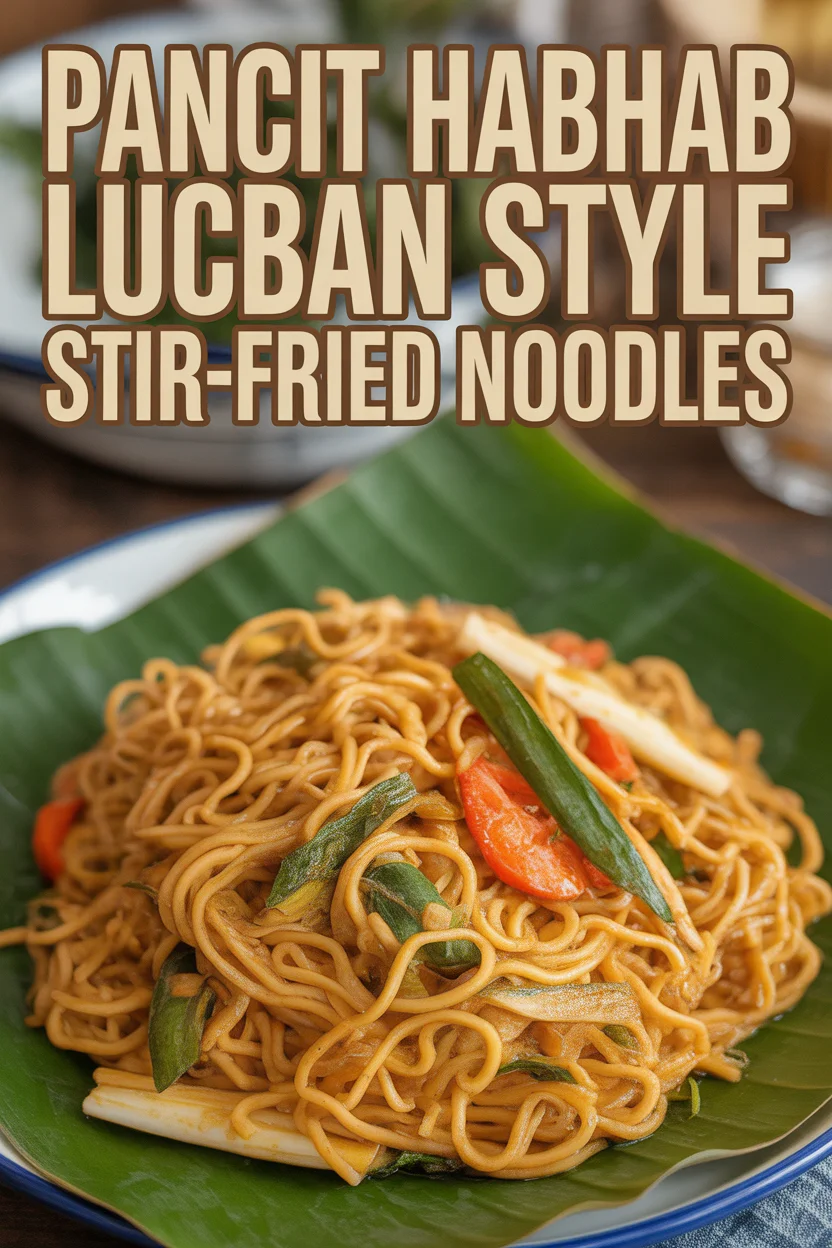
Pancit Habhab
Ingredients
Noodles
- 500 grams miki lucban (or thick egg noodles if you can’t find the original) Fresh noodles are preferred for the best texture.
Vegetables and Meat Alternatives
- 2 tablespoons oil Any cooking oil like canola works.
- 5 cloves fresh garlic, minced
- 1 large onion, sliced thin
- 200 grams pork belly, sliced thin (optional) Can be substituted with tofu or mushrooms.
- 1 cup chicharro (snow peas) or green beans, sliced at an angle
- 1 cup carrots, julienned
Seasoning
- 2 tablespoons soy sauce
- 1 tablespoon oyster sauce (optional) Adds extra flavor.
- 2 cups broth (chicken or vegetable) Either type of broth works well.
- 1 pinch salt and ground pepper Season to taste.
- 2 tablespoons banana vinegar (for serving) To be used when serving, not cooked in.
Garnish and Serving
- Chopped green onions For garnish.
- Banana leaves (cleaned, for serving) If unavailable, use a big plate.
Instructions
Preparing Noodles
- Rinse fresh miki lucban noodles in hot water. For dried noodles, boil for 3-4 minutes and rinse with cold water.
- Make sure noodles are a little firm as they will absorb sauce later.
Stir-Frying Vegetables and Meat
- Heat oil in a big pan or wok. Add the minced garlic and sauté until fragrant.
- Add onions and cook until soft, then add pork (or tofu) and cook until browned.
- Stir in the snow peas and carrots, cooking quickly to maintain their crispness.
Seasoning
- Add soy sauce and oyster sauce to the mixture, followed by salt and pepper to taste.
- Pour in the broth and let it come to a simmer before adding the prepared noodles.
- Gently mix everything and allow the noodles to soak up the sauce for 2-3 minutes.
Serving
- Transfer the noodles to a cleaned banana leaf or a large plate.
- Garnish with chopped green onions and serve with a side of banana vinegar.
